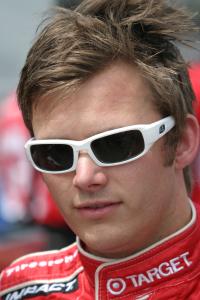The Grid: 33 Greatest Indy 500 Drivers of All Time—Ranked
Ladies and gentleman, start your arguments.

It was a race to remember, with Indianapolis 500 darling Dario Franchitti winning his third Borg-Warner Trophy and embracing both his wife, actress Ashley Judd, and his friend Dan Wheldon’s widow, Susie, with warmth to match the day’s second-hottest temperatures on record, 91 degrees.

Dan Wheldon was going to save IndyCar. That was the premise with which I set out to write an early-season profile of the Brit in the spring of 2005. He was 26, dapper, handsome, and quotable in a sneering, “like-it-or-lump-it” attitude that seemed about as sincere as his insistence that he only drank Red Bull and Jim Beam, his sponsor. He was coming off his first full season, having won three races and finished second in points, and sitting at a table in the back of his trailer for an interview the night before the first race in Homestead, hair spiked stiff, slacks immaculately pressed. He flashed a snaggle-toothed grin and agreed that, “Yeah, a good piece is exactly what the sport needs,” to get fans on board.

This past winter was a tragic one for IndyCar. The loss of my friend Dan Wheldon pushed race officials to place a renewed emphasis on improving safety in IndyCar, and as we approach the high-speed Indianapolis 500 with an all-new Dallara chassis, the need for those improvements to be effective becomes more urgent than ever.

Fresh-faced IndyCar star JR Hildebrand—a rookie no more, and not yet a veteran—takes the wheel in Indy Monthly’s May issue. The 24-year-old suffered a series of maladies, both physical and personal, in 2011. “These things happen in auto racing,” says a member of Hildebrand’s team. “But everything happened to JR, and I mean everything, in one year.”